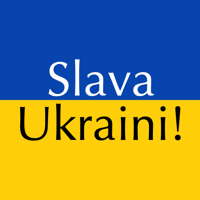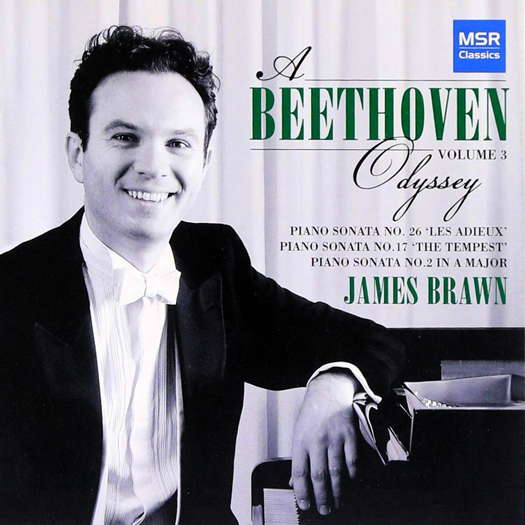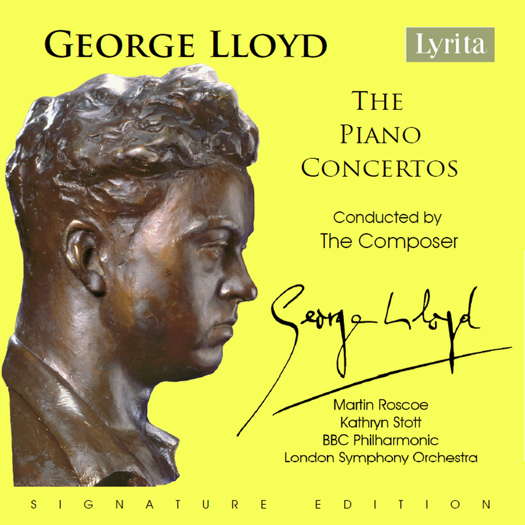 VIDEO PODCAST: Slava Ukraini! - recorded on the day Europe woke up to the news that Vladimir Putin's Russian forces had invaded Ukraine. Also features Caitríona O'Leary and Eric Fraad discussing their new film Island of Saints, and pays tribute to Joseph Horovitz, Malcolm Troup and Maria Nockin.
VIDEO PODCAST: Slava Ukraini! - recorded on the day Europe woke up to the news that Vladimir Putin's Russian forces had invaded Ukraine. Also features Caitríona O'Leary and Eric Fraad discussing their new film Island of Saints, and pays tribute to Joseph Horovitz, Malcolm Troup and Maria Nockin.
- Johannes Chrysostomus Wolfgangus Theophilus Mozart
- Barbirolli
- In-depth Features
- Eugen Berthold Friedrich Brecht
- Eduard Hanslick
- Phasma-Music
- Jonathan Harvey
- Bellini: La Sonnambula
 SPONSORED: CD Spotlight. Masterful Handling - Volume 3 of James Brawn's Beethoven, praised by Andrew Schartmann.
SPONSORED: CD Spotlight. Masterful Handling - Volume 3 of James Brawn's Beethoven, praised by Andrew Schartmann.
All sponsored features >>

In the Shadow of War
GEOFF PEARCE listens to piano concertos by British composer George Lloyd
'... there is much to be gained from this set ...'
For some time I have been intrigued by the composer George Lloyd (1913-1998), and have heard a few of his symphonies, but not the piano concertos. This set is interesting because the recordings are all conducted by the composer, and feature two very fine orchestras and soloists. Lloyd served in World War II, was severely affected by it, and the first three concertos on this set show the influence of that.
The first concerto, entitled Scapegoat, was composed in 1963 and dedicated to and first performed by the composer's friend, John Ogdon. On this recording, the soloist is Martin Roscoe, performing with the BBC Philharmonic. It is divided into five tracks for this recording. The piece is interesting in that it is unmistakably music of the twentieth century, but there are moments when its romantic soul shines forth rather gloriously.
Listen — George Lloyd: Lento enfatico - Largamente (Scapegoat)
(SRCD.2421 CD1 track 1, 4:48-5:28) ℗ 1991 Lloyd Music Ltd :
The second track is more restless and I found it rather Vaughan Williams-like, especially with one of the motives used and some of the orchestral touches. The third section is more playful and lighthearted. This is followed by a more violent and dramatic fourth section which is certainly quite a contrast to the previous section.
Listen — George Lloyd: Violente (Scapegoat)
(SRCD.2421 CD1 track 4, 2:19-3:05) ℗ 1991 Lloyd Music Ltd :
The final section is serene for the most part - there are a couple of passages though that certainly made me sit up - and provides a very interesting close to this movement.
The Third Piano Concerto from 1968 is played here by the pianist who gave this work its first performance, Kathryn Stott. The work is in three movements. The first, marked 'Furioso', as the name suggests, starts at a somewhat defiant and fast pace, with the soloist and orchestra entering together. It is dance-like and some of the motifs sound like they were inspired by popular songs. I found the first movement interesting at every turn, with arresting themes, brilliant orchestral writing and some truly bravura piano writing.
Listen — George Lloyd: Furioso (Piano Concerto No 3)
(SRCD.2421 CD1 track 6, 3:37-4:28) ℗ 1989 Lloyd Music Ltd :
The second movement is twice as long as the first, and in complete contrast. Marked 'Lento', it is reflective and somewhat sorrowful, and at times full of dread. (Evidently the composer said that when writing it, he was thinking of the 'Knock at the door' that happened to so many people late at night or early in the morning, before they were taken away, in occupied Europe, during the war.) I did at times have a feeling of disquiet.
The last movement, almost as long as the second, contains a mixture of darkness, despair and light. It is complex emotionally, but one is not left lighthearted at the end.
Listen — George Lloyd: Vivace (Piano Concerto No 3)
(SRCD.2421 CD1 track 8, 16:49-17:35) ℗ 1989 Lloyd Music Ltd :
The next concerto here, again featuring the BBC Philharmonic and Martin Roscoe, is of the Second Piano Concerto. Lloyd began writing the work in 1963, but it was not completed and orchestrated until 1968, and the first performance was not given until 1984, with the soloist on this recording and the same orchestra, conducted by George Lloyd's champion, Edward Downes. This is a single movement work, divided into three sections, and the main theme is inspired by a caricature of Hitler dancing a jig.
Listen — George Lloyd: Vivo - Moderato (Piano Concerto No 2)
(SRCD.2421 CD2 track 1, 1:47-2:36) ℗ 1991 Lloyd Music Ltd :
In contasting sections, it is somewhat dramatic at first, then sardonically gleeful, followed by an almost nocturne-like section. The last section is full of movement and life, but has some surprising turns. I am not really sure just how much I like this work yet.
The final concerto was written in 1970, the orchestration was completed in 1983 and it was first performed and also recorded the following year, with Kathryn Stott, the London Symphony Orchestra and the composer conducting. That recording is the one on this set. It is a three movement work and is much brighter and happier than the previous three concertos - almost jazzy in places and with a geniality and jauntiness, but at the same time, a somewhat romantic sweep. I thoroughly enjoyed this work and the recorded sound is sumptuous and well balanced. The slow movement is very beautiful and full of tender feeling.
Listen — George Lloyd: Larghetto (Piano Concerto No 4)
(SRCD.2421 CD2 track 6, 0:02-1:00) ℗ 1988 Lloyd Music Ltd :
The last movement is playful, exciting and happy, with a reflective middle section, before a return to the jocular nature of the movement's opening.
Listen — George Lloyd: Vivace - Lento - Vivace (Piano Concerto No 4)
(SRCD.2421 CD2 track 7, 7:04-7:53) ℗ 1988 Lloyd Music Ltd :
With great orchestras, soloists, the composer conducting, a fine informative booklet and some of the nicest recorded sounds I have heard, there is much to be gained from this set, and I always find George Lloyd a composer worth listening to.
Copyright © 29 May 2024
Geoff Pearce,
Sydney, Australia



